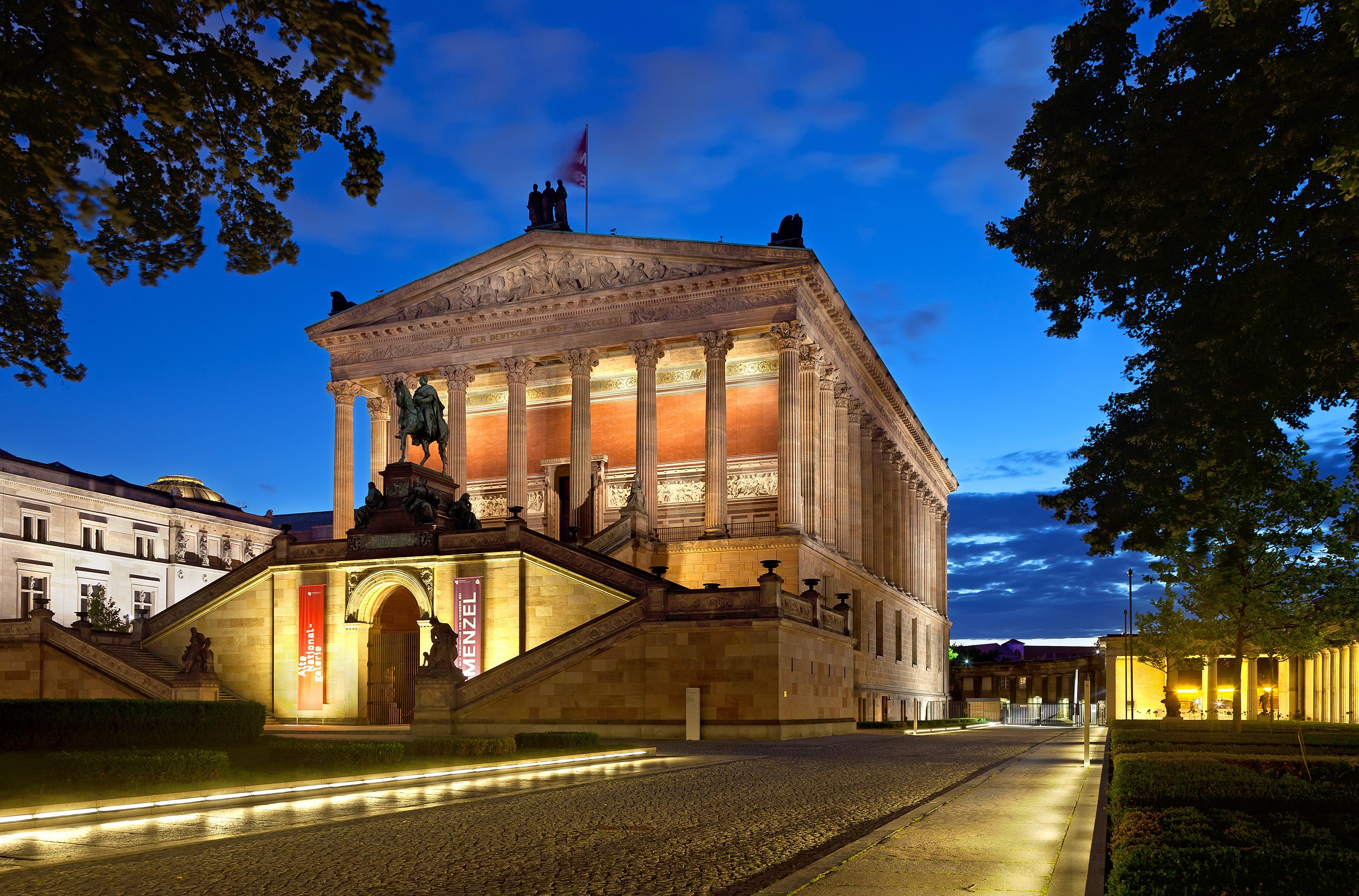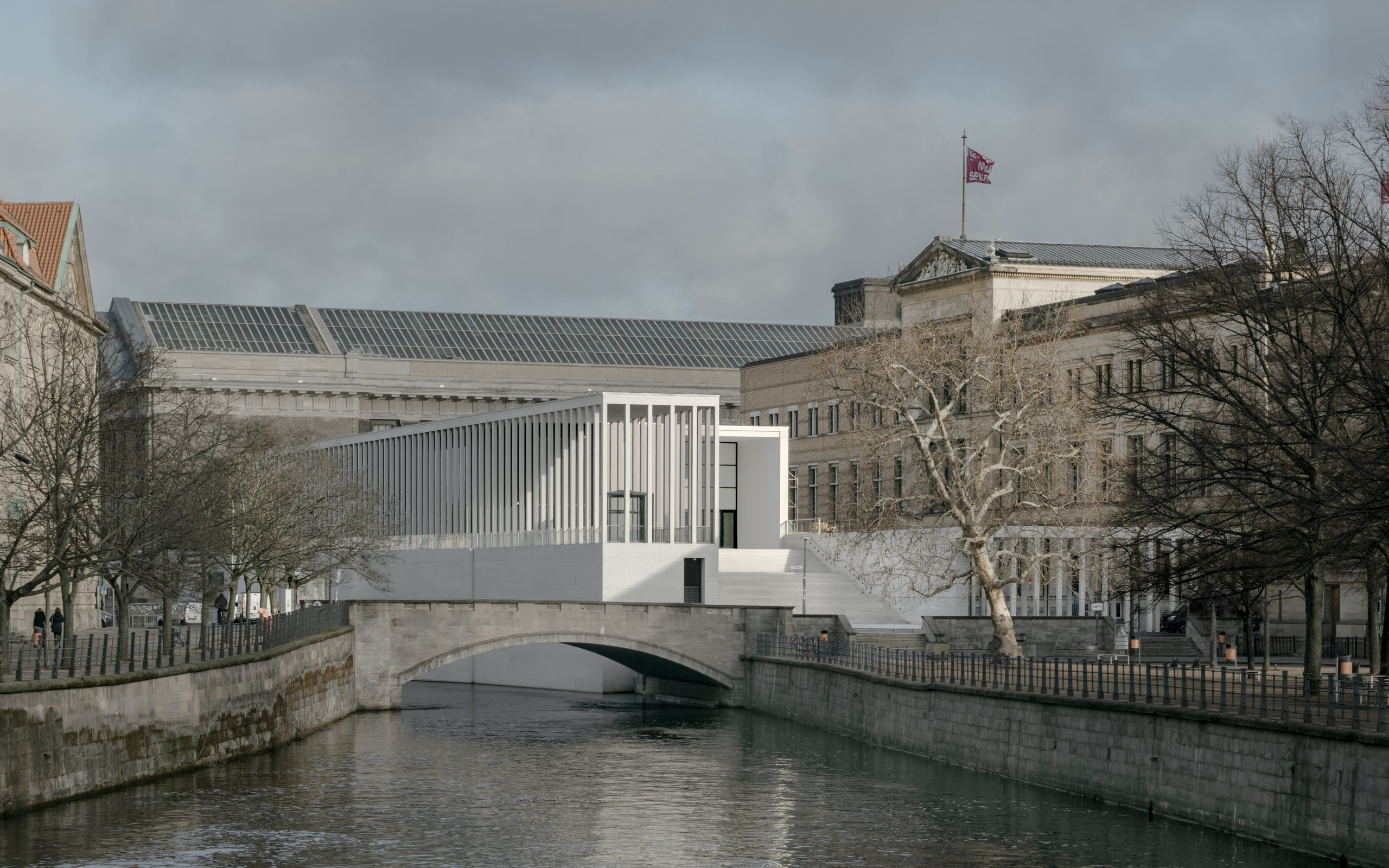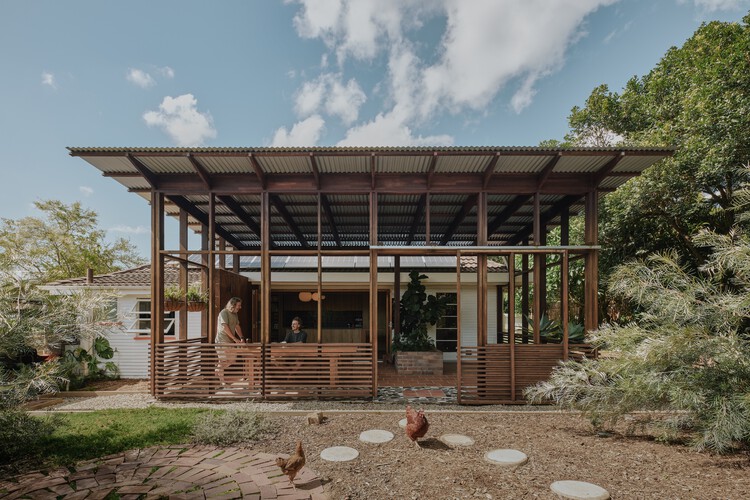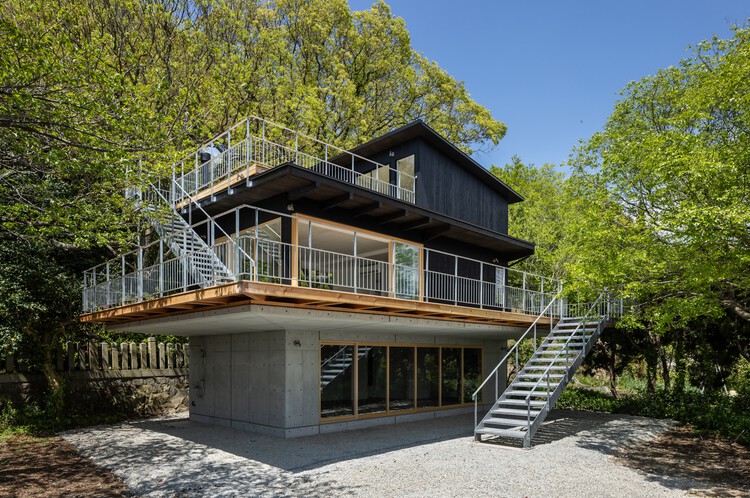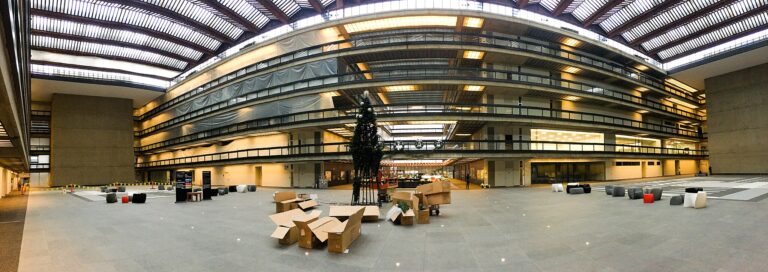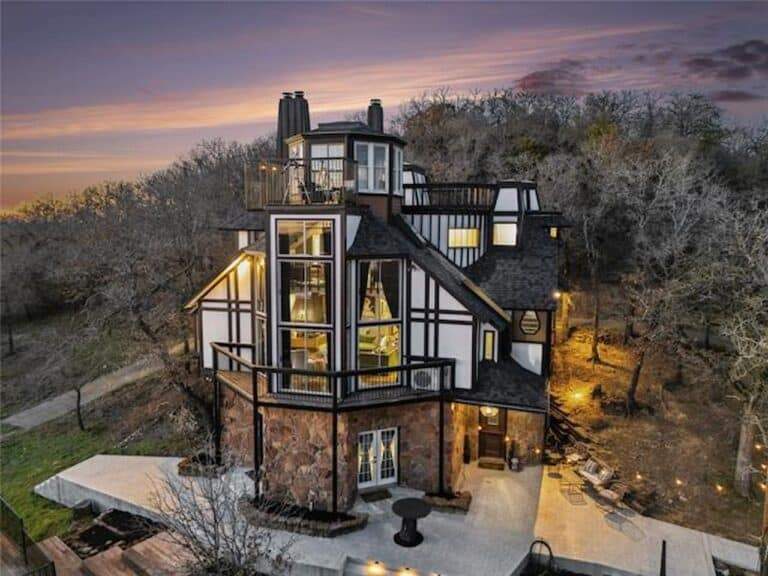Museum Island (Museumsinsel) in Berlin is an extraordinary museum complex that stands out globally for its uniqueness. Located on the northern section of Spree Island, which spans the Spree River in central Berlin, this complex features five historic museums constructed between 1824 and 1930, along with a contemporary building designed by David Chipperfield Architects that was completed in 2018. In 1999, the entire complex was designated a UNESCO World Heritage Site, recognized as a “social phenomenon” rooted in the Enlightenment of the 18th century.
The Altes Museum, the first museum established on the site, was created by the renowned Prussian architect Karl Friedrich Schinkel at the behest of King Frederick William III of Prussia. Eleven years after the Altes Museum was completed in 1830, King Frederick William IV envisioned transforming Spree Island into “a sanctuary for art and science.”
In accordance with the king’s directive, architect Friedrich August Stüler, a protégé of Schinkel, crafted the initial design for the complex. The first two museum structures completed after the Altes Museum—the Neues Museum and the Alte Nationalgalerie—were constructed according to Stüler’s vision. However, the designs for the last two of the five museums we see today, the Bode-Museum and the Pergamonmuseum, were revised due to the construction of a railway that intersected the northern part of the island in 1882.
All five museum buildings sustained varying degrees of damage during the world wars. Fortunately, since the 1990s, following the fall of the Berlin Wall, extensive repairs and restorations have been undertaken under the auspices of the Stiftung Preußischer Kulturbesitz (Prussian Cultural Heritage Foundation). Although originally designed and later renovated by different architects, the museums seamlessly integrate into a cohesive whole, both historically and in their current state.
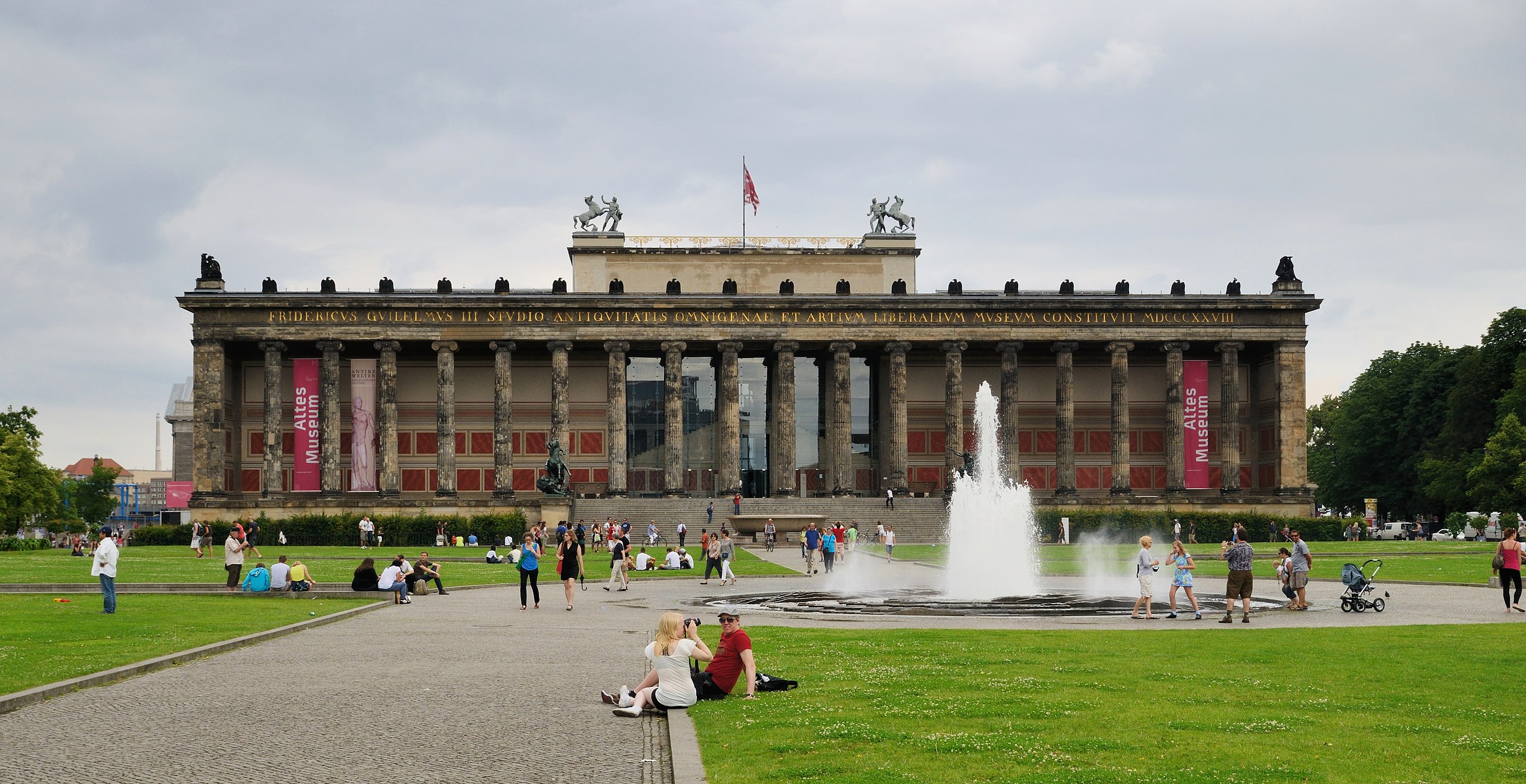
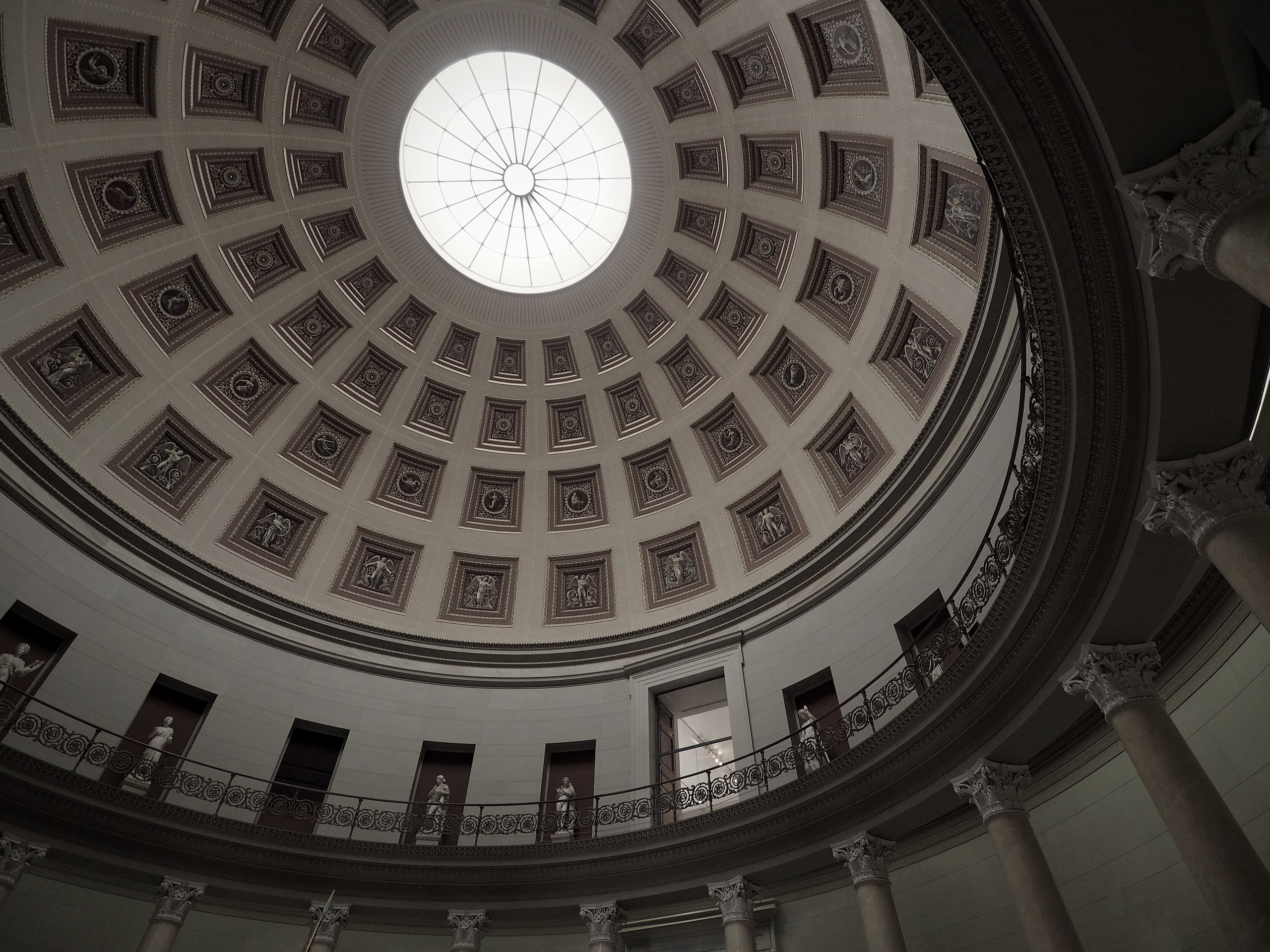
Altes Museum
Situated at the heart of Spree Island, this Neo-Classical structure was crafted by Schinkel in 1830. Its façade resembles a temple, featuring an extensive portico that serves as the entrance to the museum. Upon entry, visitors are greeted by a grand three-story central rotunda, highlighted by a prominent oculus. Classical antiquities can be seen from this vantage point.
The building underwent reconstruction in the post-war era to accommodate contemporary artworks from the GDR. The recent restoration, led by Hilmer & Sattler and Albrecht, emerged victorious in a 1998 competition. However, while some urgent repairs have been carried out, significant restoration efforts remain pending.
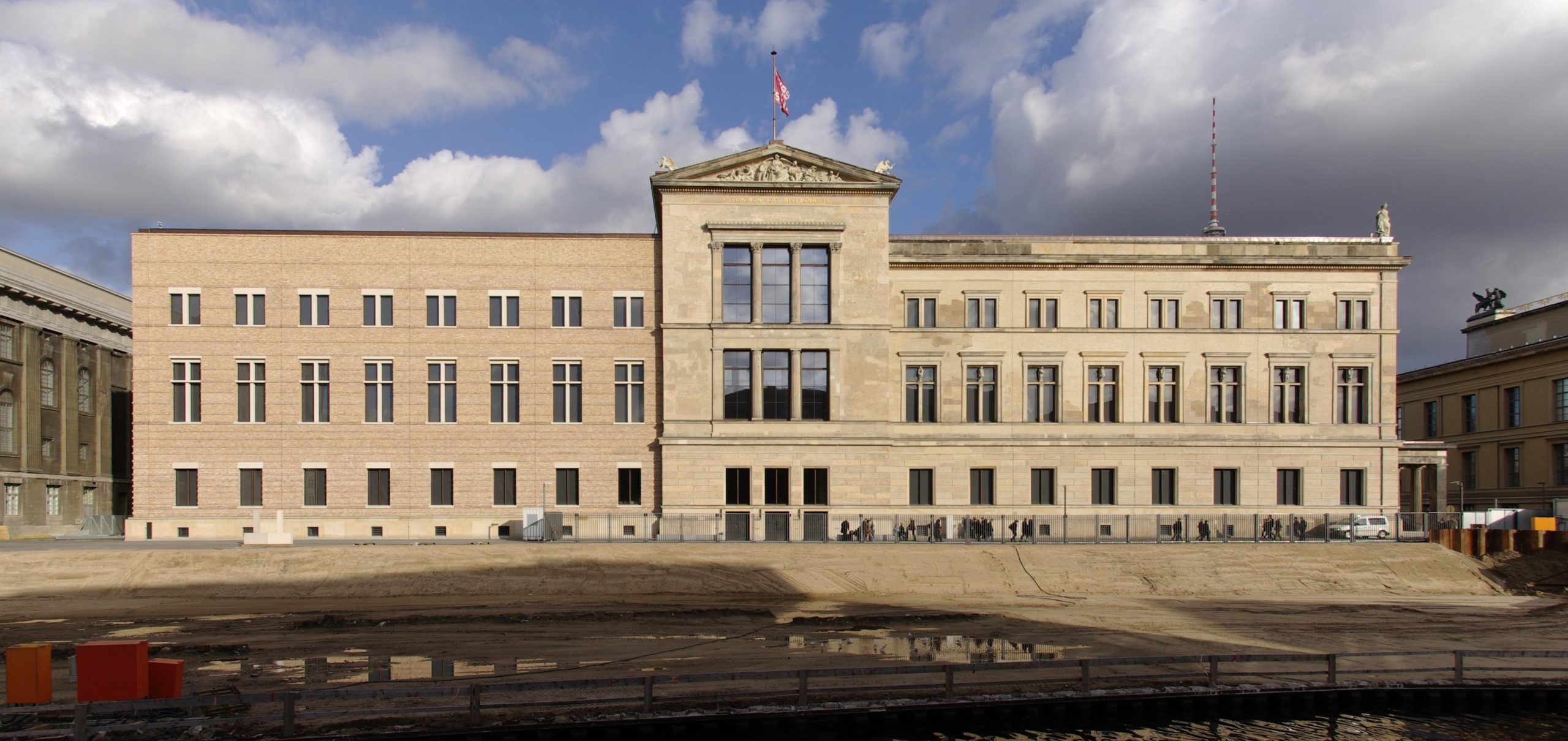
The front of the Neues Museum by Janericloebe, public domain.
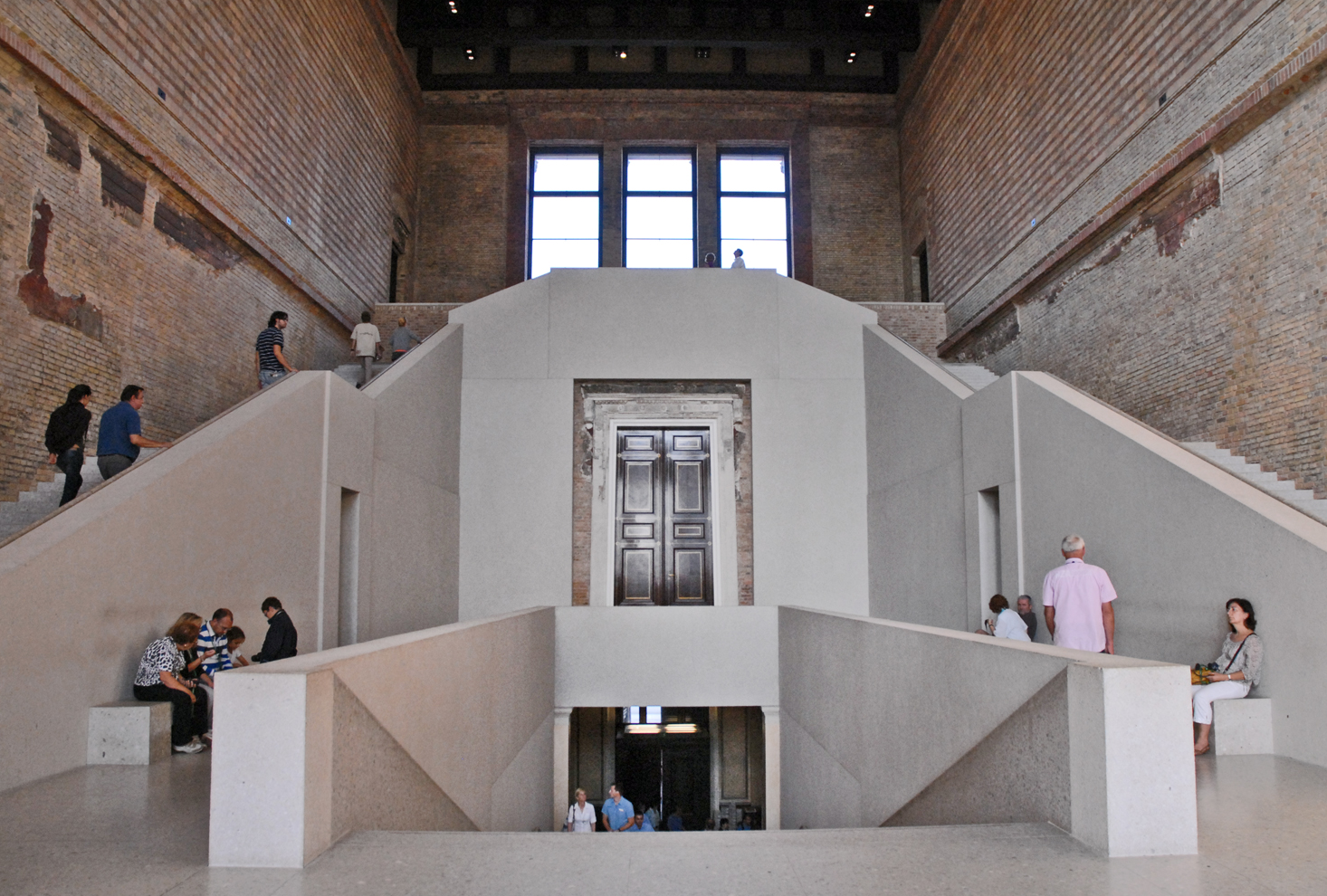
The main staircase in the Neues Museum by Jean-Pierre Dalbéra via Wikimedia Commons.
Neues Museum
Located behind the Altes Museum is the Neues Museum, which underwent renovation by David Chipperfield Architects in collaboration with Julian Harrap Architects. Originally constructed between 1843 and 1859 by Friedrich August Stüler, it was the second of the five museums to open. Following significant damage from bombings during World War II, restoration efforts were minimal until a competition was held in the 1990s.
The restoration initiative involved thorough site cleaning and enhancements to the building’s functionality, incorporating both external and internal modifications. These updates, including new floor plates and staircases, utilize contemporary architectural styles while preserving the visibility of the remaining historic elements as much as possible.
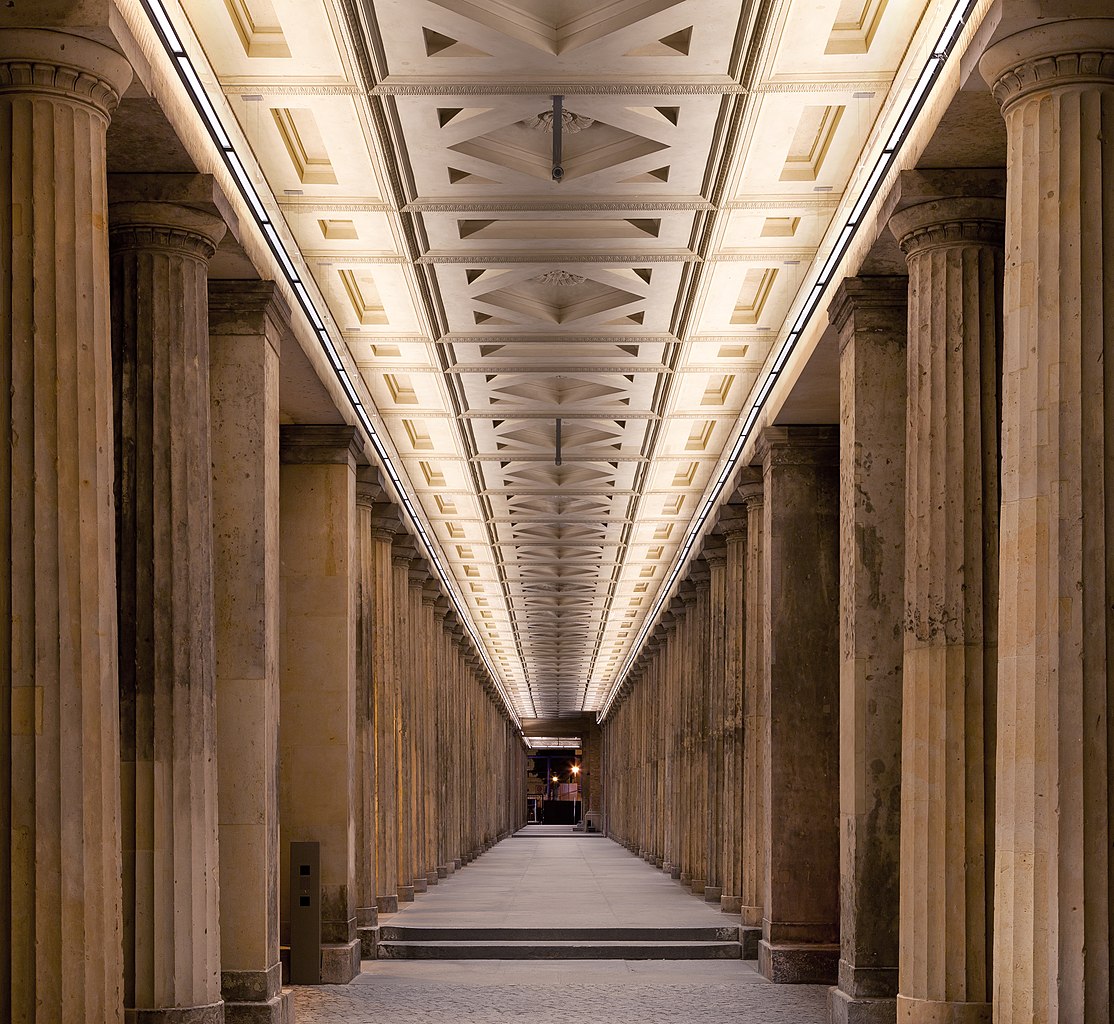
The Alte Nationalgalerie © Thomas Wolf (CC BY-SA 3.0 DE) via Wikimedia Commons.
Alte Nationalgalerie
Adjacent to the Neues Museum is another museum crafted by Stüler. In 2001, it was the first of the five museums to reopen. Both of Stüler’s museums are comparable in size and significantly smaller than the other three, while the Alte Nationalgalerie was in relatively better condition than the Neues Museum during the 1990s.
HG Merz oversaw the comprehensive renovation starting in 1992. The gallery remained accessible during the exterior updates until 1998, when it closed for an extensive renovation. The building now retains most of its original architectural features and showcases 19th-century art.
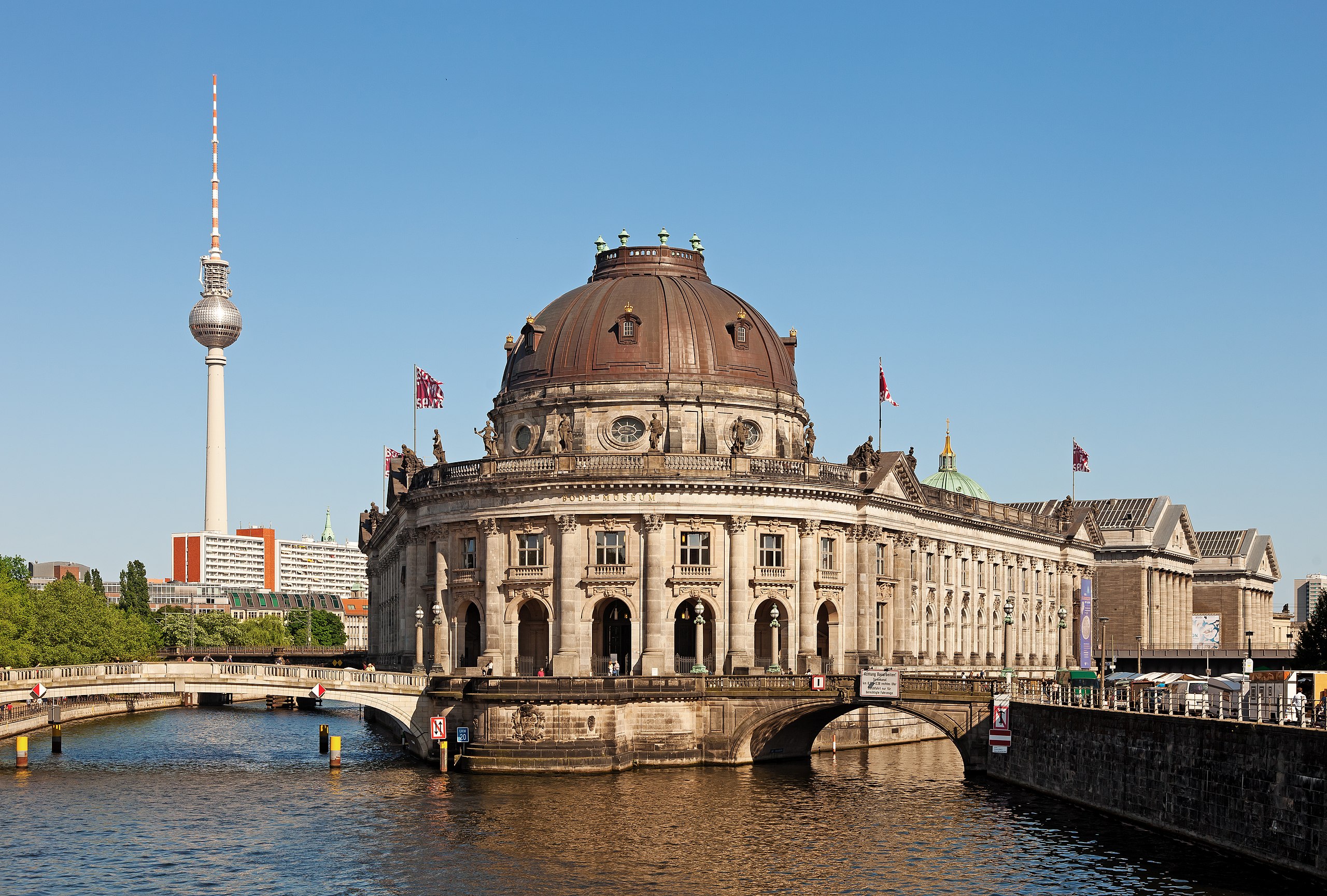
The Bode-Museum © Thomas Wolf (CC BY-SA 3.0 DE) via Wikimedia Commons.
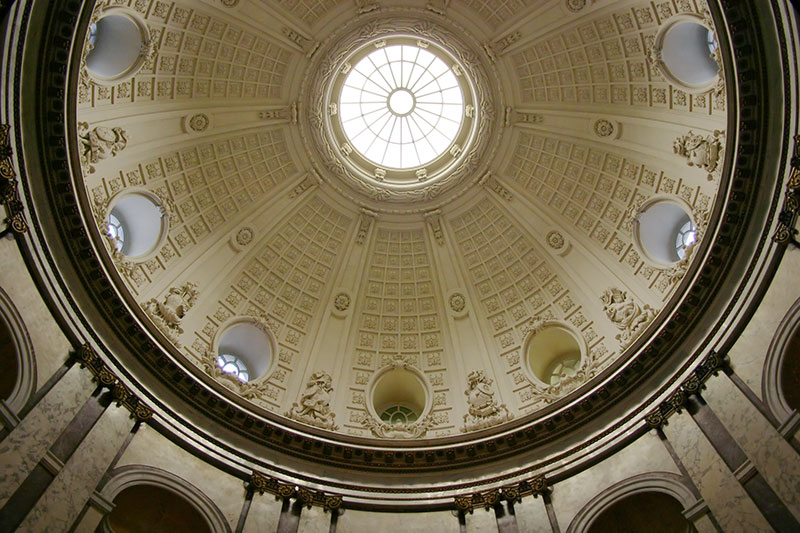
Inside the Bode-Museum, image by Martin Kraft (CC BY-SA 3.0) via Wikimedia Commons.
Bode-Museum
The Bode Museum is situated at the northernmost point of Museum Island. Constructed between 1898 and 1904 under the direction of Ernst Eberhard von Ihne, the museum features both a large and a small dome at its respective ends. The Bode Museum, along with the subsequently established Pergamon Museum, flanks either side of the railway that was constructed in 1882.
The renovation, designed and executed by Heinz Tesar and Atelier Christoph Fischer, integrates the two museums by creating new exhibition areas beneath the railway. This project continues the restoration efforts initiated after World War II and includes a comprehensive refurbishment of all historical decorations.
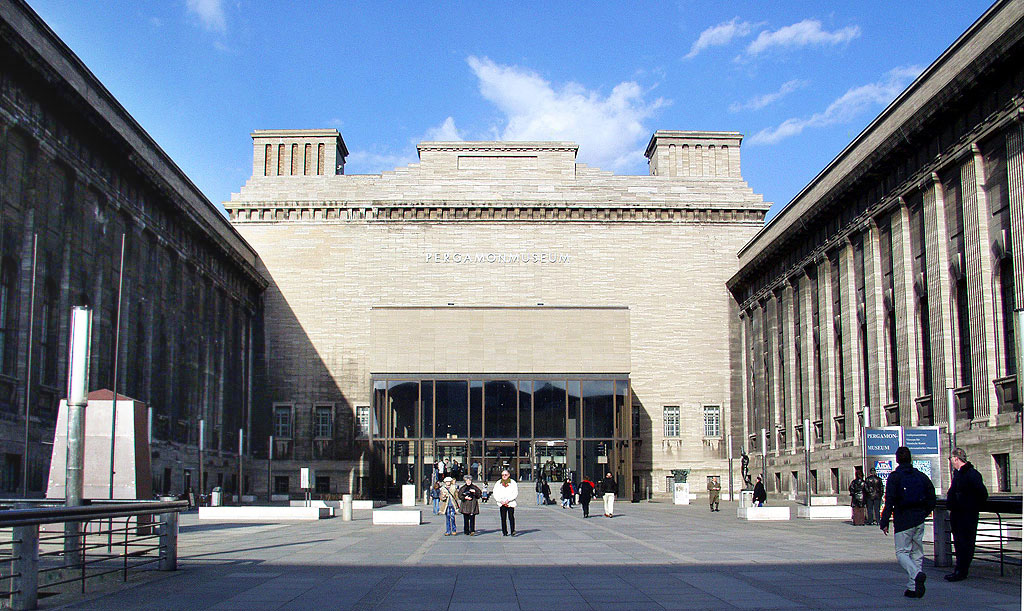
In the courtyard of the Pergamonmuseum © Raimond Spekking / CC BY-SA 4.0 (via Wikimedia Commons).
Pergamonmuseum
The final and most expansive of the five museums is the Pergamonmuseum, which was constructed from 1910 to 1930 under the direction of Alfred Messel. In contrast to the other four museums, it remains a work in progress and is partially inaccessible. Plans by O.M. Ungers include the addition of a fourth wing to the existing three, creating an enclosed open courtyard at the center. This new wing will also extend the flow of movement from the James-Simon-Galerie in a direct line.
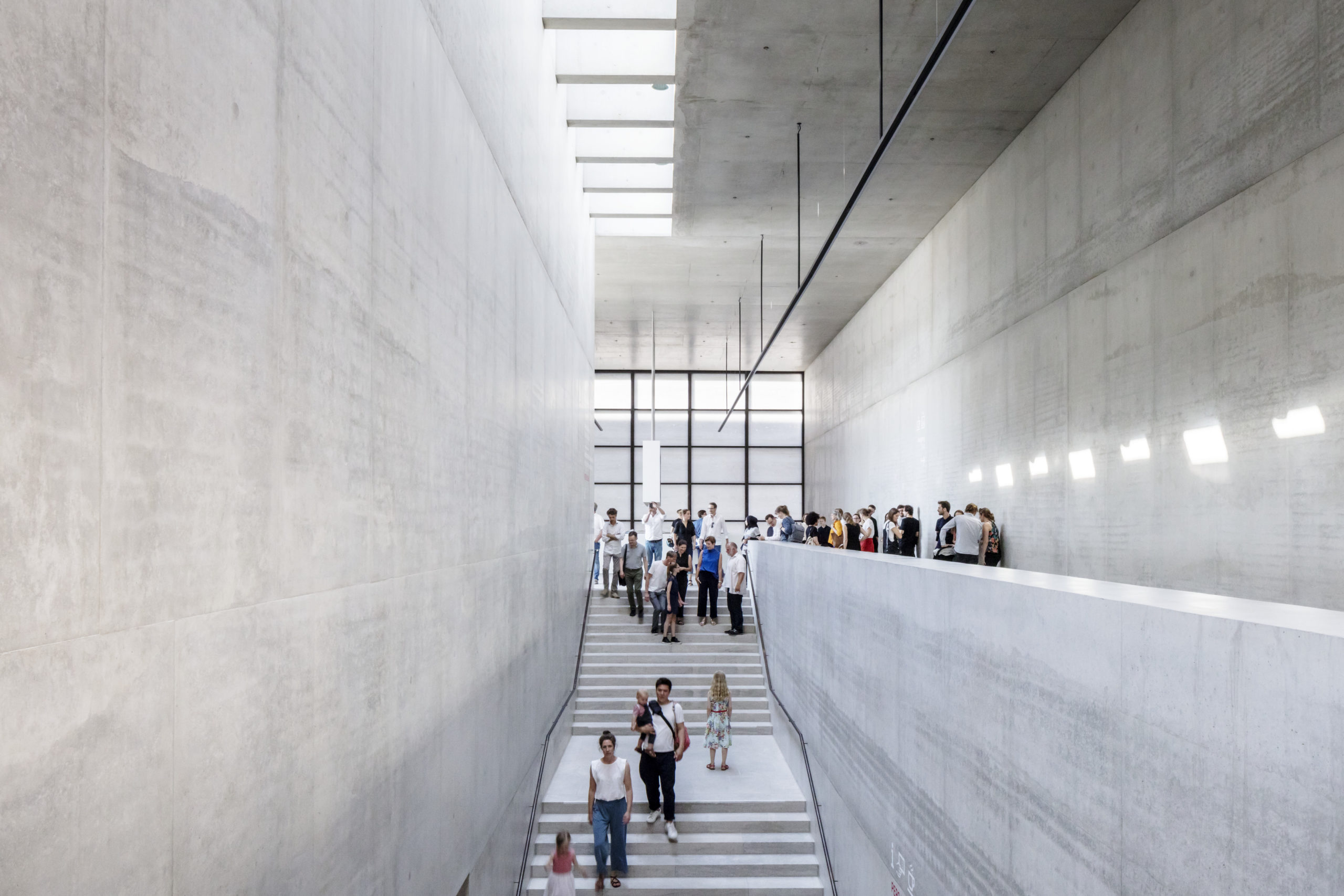
James-Simon-Galerie by David Chipperfield Architects, Berlin, Germany
James-Simon-Galerie
The sole new construction on the island is the James-Simon-Galerie, designed by David Chipperfield Architects. This structure is seamlessly linked to both the Neues Museum and the Pergamonmuseum. Its modern colonnades reflect the classical architectural styles of its surroundings. Functionally, it enhances Museum Island by offering various tourist services, such as an information center, lockers, dining options, and retail spaces. Instead of serving as an exhibition space, it primarily functions as an infrastructure that presents significant revenue-generating potential.


